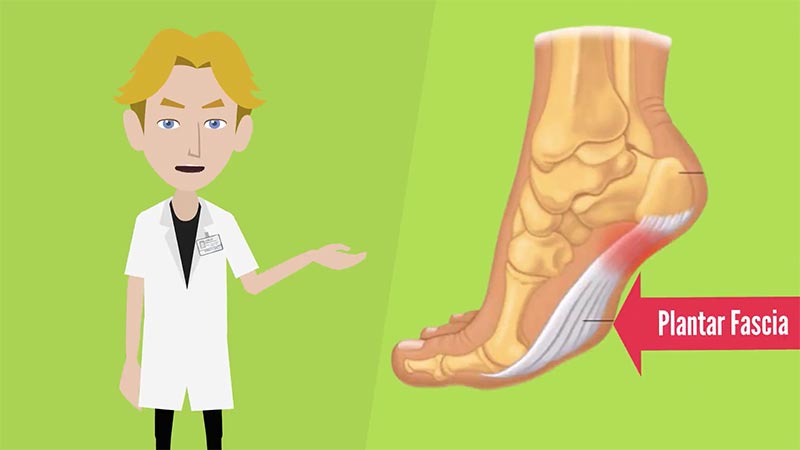Plantar Fasciitis Treatment Near Me Winslow AZ
Welcome to our latest blog post, your beacon of hope in the sea of foot discomfort. If the words ‘Plantar Fasciitis’ resonate with you, then you’re likely no stranger to the relentless foot pain that it can bring. But there’s a silver lining, and it comes in the form of expert care from top-rated Plantar Fasciitis specialists. In this post, we’ll be your guide, helping you navigate through the maze of healthcare options to uncover the best specialists near you. We’ve scoured the web, and are ready to share our findings to help you say goodbye to foot pain once and for all. Plantar Fasciitis can feel like an unwelcome guest but fear not, we’re here to help you show it the door. We understand the longing for relief, the dream of taking each step without wincing in pain. That’s why we’ve dedicated our time and resources to compile a list of top-notch Plantar Fasciitis doctors in Winslow AZ who are just a call or click away. Remember, enduring chronic foot pain doesn’t have to be your reality. So, get comfortable, because we are about to embark on a journey towards a future where Plantar Fasciitis is a thing of your past. Let’s dive in!
Unveiling the Mystery of Plantar Fasciitis
Plantar fasciitis, a common cause of heel pain, often feels like a mystery to those who suffer from it. However, understanding this condition is the first step towards effective treatment and recovery. Let’s delve into the reasons behind its occurrence and how to recognize its symptoms.
The plantar fascia is the thick band of tissue that connects your heel bone to your toes. When it becomes inflamed or irritated, the condition known as plantar fasciitis develops. This typically happens due to repetitive strain or excessive pressure on the plantar fascia. Factors such as age, certain types of exercise, obesity, and foot mechanics can increase the risk of developing this condition.
Recognizing the symptoms of plantar fasciitis is crucial for timely treatment. The most common symptom is a stabbing pain near the heel, which is usually worse in the morning when you take your first steps out of bed. The pain may decrease as the day progresses but can return after long periods of standing or when you stand up after sitting.
In conclusion, unraveling the mystery of plantar fasciitis begins with understanding why it happens and recognizing its symptoms. Knowledge about this condition empowers you to seek timely medical help and embark on the path to recovery. Remember, if you’re experiencing persistent heel pain, don’t ignore it – it could be a sign of plantar fasciitis, and early treatment can significantly improve your prognosis.
The Role of a Plantar Fasciitis Specialist
The role of a plantar fasciitis specialist in diagnosing and treating the condition is pivotal. They bring a focused expertise that can make the difference between prolonged suffering and swift relief. Their comprehensive understanding of the foot’s anatomy and the intricacies of plantar fasciitis allows them to offer highly specialized care to patients.
In diagnosing the condition, a plantar fasciitis specialist employs a combination of patient history analysis, physical examination, and imaging studies. This comprehensive approach enables them to pinpoint the exact cause of the pain. They might look for signs of inflammation or tenderness during the physical examination, or they may use imaging modalities like X-rays or MRIs to rule out other conditions that could be causing heel pain.
Once a diagnosis is confirmed, the plantar fasciitis specialist devises a treatment plan tailored to the individual needs and lifestyle of the patient. The goal is not just to treat the symptoms but to address the root causes of the condition. Treatment plans typically include a blend of rest, physical therapy, shoe modifications, over-the-counter pain relievers, and in some cases, more advanced treatments like corticosteroid injections or minimally invasive surgery.
These treatment plans are designed with proven efficacy in mind. The specialist bases their recommendations on scientific research and clinical evidence, ensuring that patients receive the most effective, up-to-date care. They continuously monitor the patient’s progress, making necessary adjustments to the treatment plan along the way.
In conclusion, the role of a plantar fasciitis specialist is critical in diagnosing and effectively treating this painful foot condition. Their focused expertise, comprehensive diagnostic approach, and commitment to evidence-based treatment strategies offer patients the best chance at swift and lasting relief from plantar fasciitis.
Finding the Best Plantar Fasciitis Specialist Near You
Finding the best plantar fasciitis specialist near you is crucial for effective treatment and recovery from this common cause of heel pain. The process may seem daunting, but with a strategic approach that includes local referrals, research, and consultation, you can find a specialist who will help you get back on your feet.
Local referrals and recommendations are a great starting point in your search for a plantar fasciitis specialist. Reach out to your general practitioner, physical therapist, or any other healthcare professional you trust. They often have networks of specialists they regularly refer patients to and can provide you with contacts that suit your needs. Personal recommendations from friends or family members who have dealt with plantar fasciitis can also be invaluable.

Plantar Fasciitis Treatment Near Me Winslow AZ
Once you have a list of potential specialists, it’s time to do some research. Look at online reviews and ratings, paying attention to patient testimonials about the doctor’s expertise, communication style, and overall patient care. Next, schedule consultations with your top choices. During these meetings, ask about their experience treating plantar fasciitis, their preferred treatment methods, and their success rates. A good specialist will take the time to answer your questions, explain your condition in understandable terms, and discuss the treatment options that best suit your specific needs.
Finally, the decision rests with you. Choose a specialist who makes you feel comfortable, heard, and confident in your abilities. Remember, you’re not just looking for a doctor with impressive credentials – you’re looking for a partner who will guide you through your journey to recovery.
In conclusion, finding the best plantar fasciitis specialist involves a combination of local referrals, thorough research, and thoughtful consultation. It may require some time and effort, but finding the right specialist is an investment in your health and well-being.
Cutting-Edge Treatments You Should Look For
Platelet-Rich Plasma (PRP) Therapy
Platelet-rich plasma (PRP) therapy is increasingly gaining recognition as an effective treatment for plantar fasciitis. This innovative approach involves the use of a patient’s platelets, collected and concentrated, and then injected back into the body, specifically into the affected area. Research indicates that PRP therapy not only reduces inflammation but also accelerates soft tissue healing, making it particularly beneficial for treating plantar fasciitis. Studies have even shown that PRP offers superior outcomes compared to steroid injections over six months, positioning it as a promising non-surgical solution for those grappling with the debilitating heel pain associated with plantar fasciitis.
Neural Prolotherapy
Neural Prolotherapy is a cutting-edge treatment option for those suffering from plantar fasciitis, offering a promising alternative to traditional methods. This innovative therapy involves the injection of a sugar solution near the nerves in the affected area, which can help reduce inflammation and pain. It works by targeting the neurogenic inflammation that is often the underlying cause of the persistent pain associated with plantar fasciitis. Patients who have undergone Neural Prolotherapy often report significant improvements in pain levels and mobility, making it an exciting development in the field of plantar fasciitis treatment.
Minimally Invasive Surgery
Minimally invasive surgery is revolutionizing the treatment of plantar fasciitis, providing patients with quicker and less burdensome options compared to traditional surgical methods. Techniques such as Tenex use ultrasonic waves to dissolve scar tissue, offering a treatment option that can be performed under light sedation in an office setting. Percutaneous ultrasonic fasciotomy delivers targeted treatment, although it’s not typically a first-line option. For those with chronic plantar fasciitis, endoscopic plantar fasciotomy (EPF) is a minimally invasive and minimally traumatic procedure that’s gaining recognition for its effectiveness. Furthermore, procedures like fasciotomy, which involves releasing the plantar fascia to decrease tension in the foot musculature, can lead to significant improvements. These innovative procedures often require shorter healing times and eliminate the need for a walking boot, transforming the patient’s recovery journey from plantar fasciitis.
Maintaining Foot Health After Treatment
Maintaining optimal foot health after treatment for plantar fasciitis is key to ensuring lasting relief and preventing the recurrence of this painful condition. Recovering from plantar fasciitis doesn’t stop at the end of the treatment; it’s a continuous process that involves diligent self-care and awareness of your body.

Plantar Fasciitis Treatment Near Me Winslow AZ
Self-care tips for lasting relief are essential to the recovery process. Regular gentle stretching exercises, especially first thing in the morning, can help maintain flexibility and strength in the foot. Wearing supportive shoes that provide adequate cushioning and arch support can go a long way in reducing strain on the plantar fascia, the band of tissue that connects your heel bone to your toes. Also, maintaining a healthy weight can alleviate undue stress on your feet.
Rehabilitation and regular follow-ups play a crucial role in the recovery journey. Physical therapy sessions can help restore strength and agility in the foot and lower leg, while regular check-ups with your healthcare provider can monitor your progress and catch any potential issues early. A personalized rehabilitation program can be extremely beneficial in managing symptoms and preventing future flare-ups.
Staying informed and updated about plantar fasciitis is another important aspect of maintaining foot health. Keep abreast of the latest research and developments in treatment methods. Understand the triggers that may cause a flare-up and learn how to manage them effectively. Be proactive in seeking advice from healthcare professionals and share your experiences with others who are dealing with the same condition.
In conclusion, maintaining foot health after treatment for plantar fasciitis involves a holistic approach that combines self-care, rehabilitation, and staying informed. By taking these steps, you can ensure lasting relief from plantar fasciitis and enjoy better foot health overall.
Conclusion
Plantar fasciitis can be a painful and debilitating condition that affects many people worldwide. However, with the right specialist by your side and cutting-edge treatment options at your disposal, relief is possible. By staying informed about the latest developments in plantar fasciitis treatment and maintaining optimal foot health after recovery, you can prevent future flare-ups and enjoy a pain-free life. Remember, your feet are the foundation of your body, and taking care of them is an investment in your overall health and well-being. So don’t hesitate to seek help from a specialist if you’re struggling with plantar fasciitis – it’s worth the effort for a pain-free future. Keep up with regular check-ups, stay active with stretching exercises, and wear proper supportive footwear to maintain foot health. Together, we can beat plantar fasciitis and live life to its fullest! So don’t let plantar fasciitis hold you back – take the first step towards recovery today. Your feet will thank you for it!
